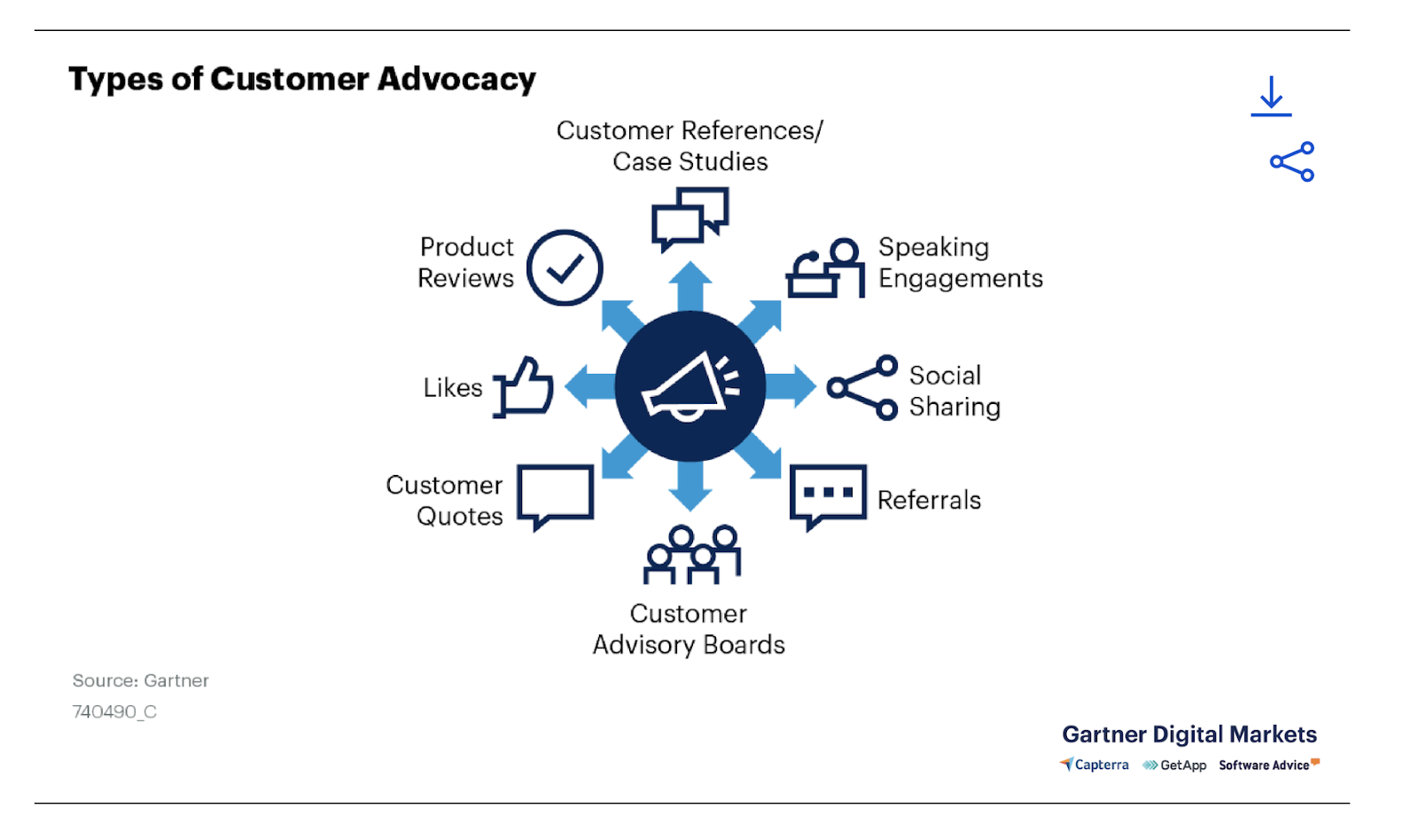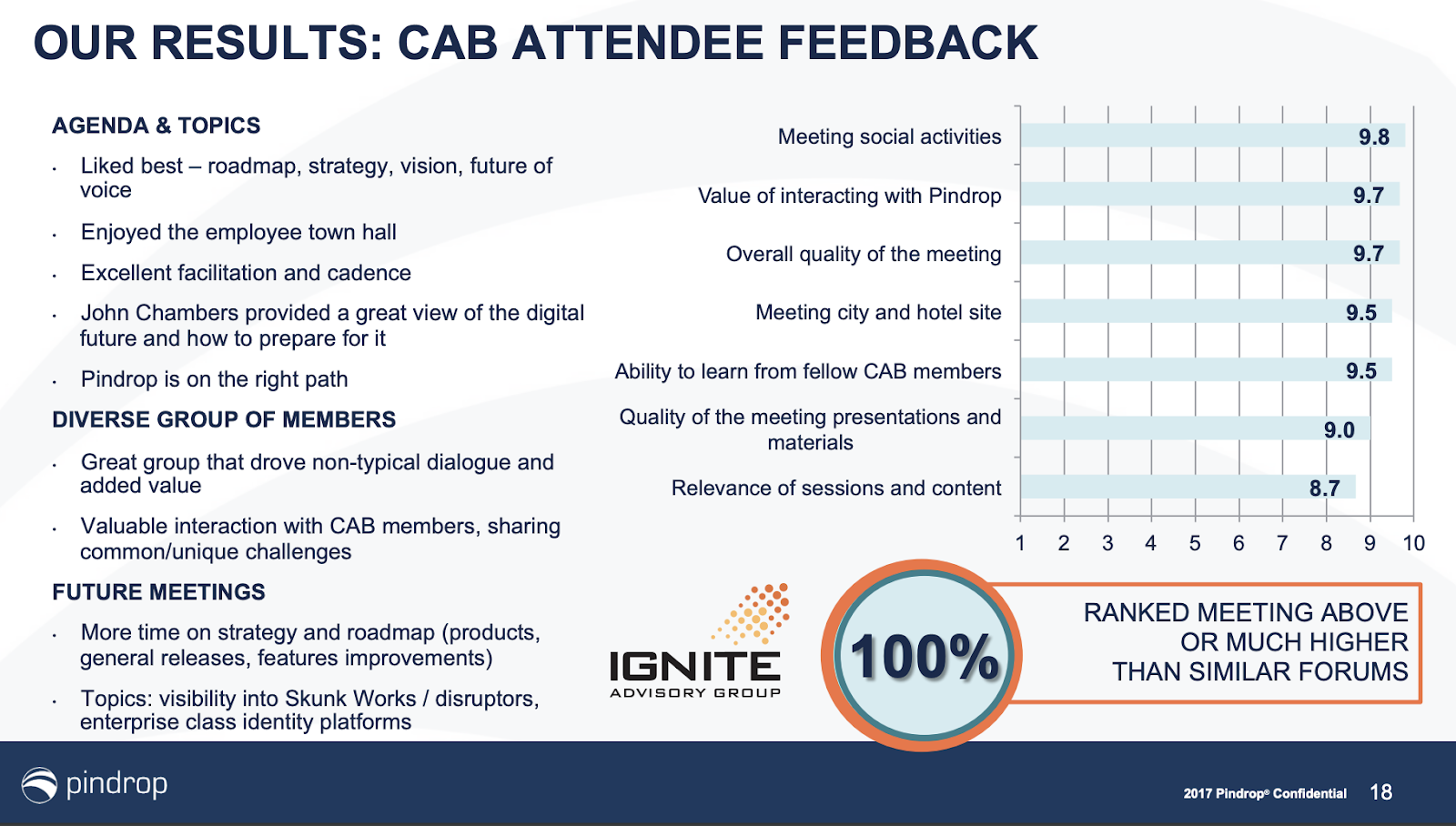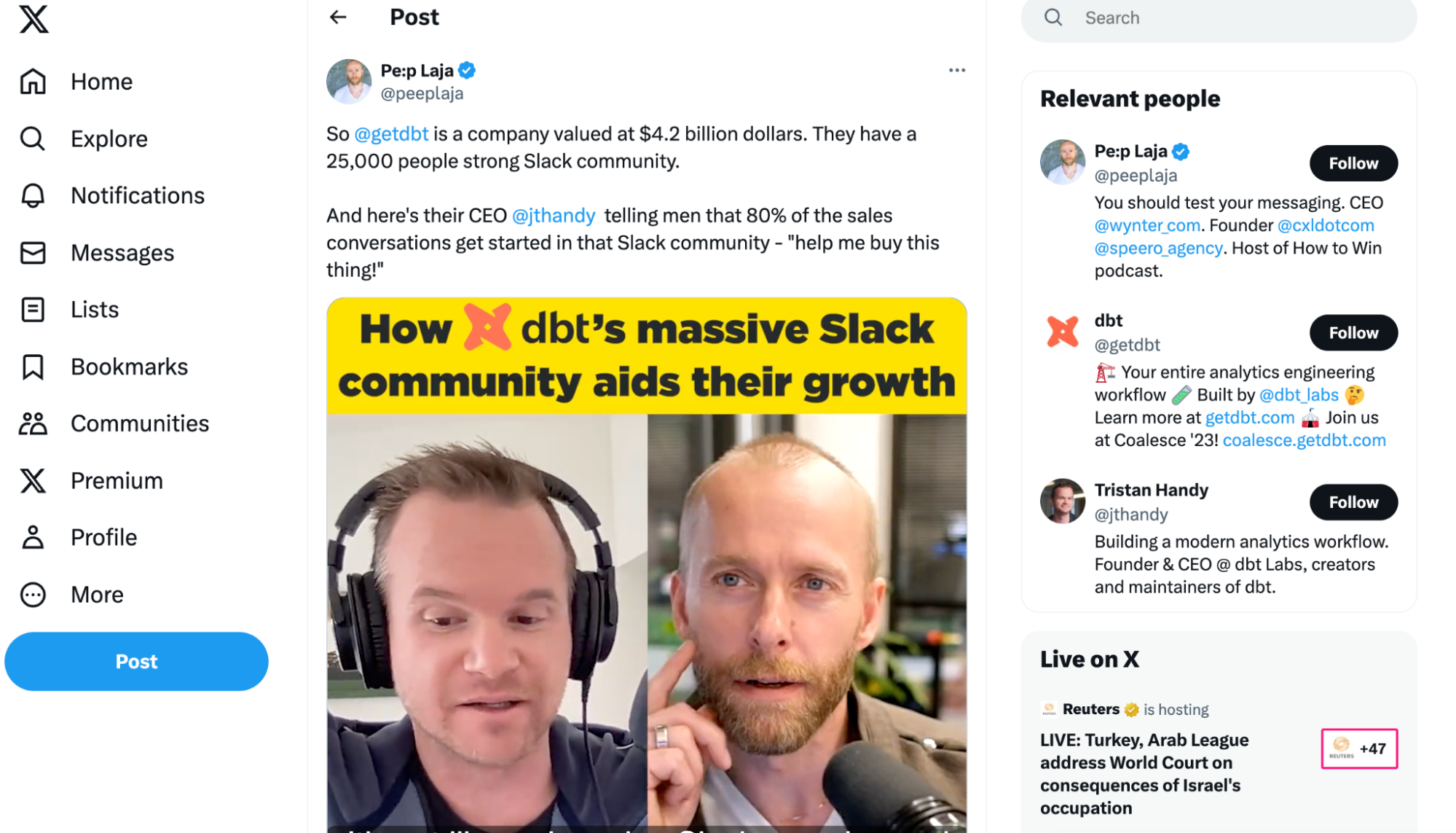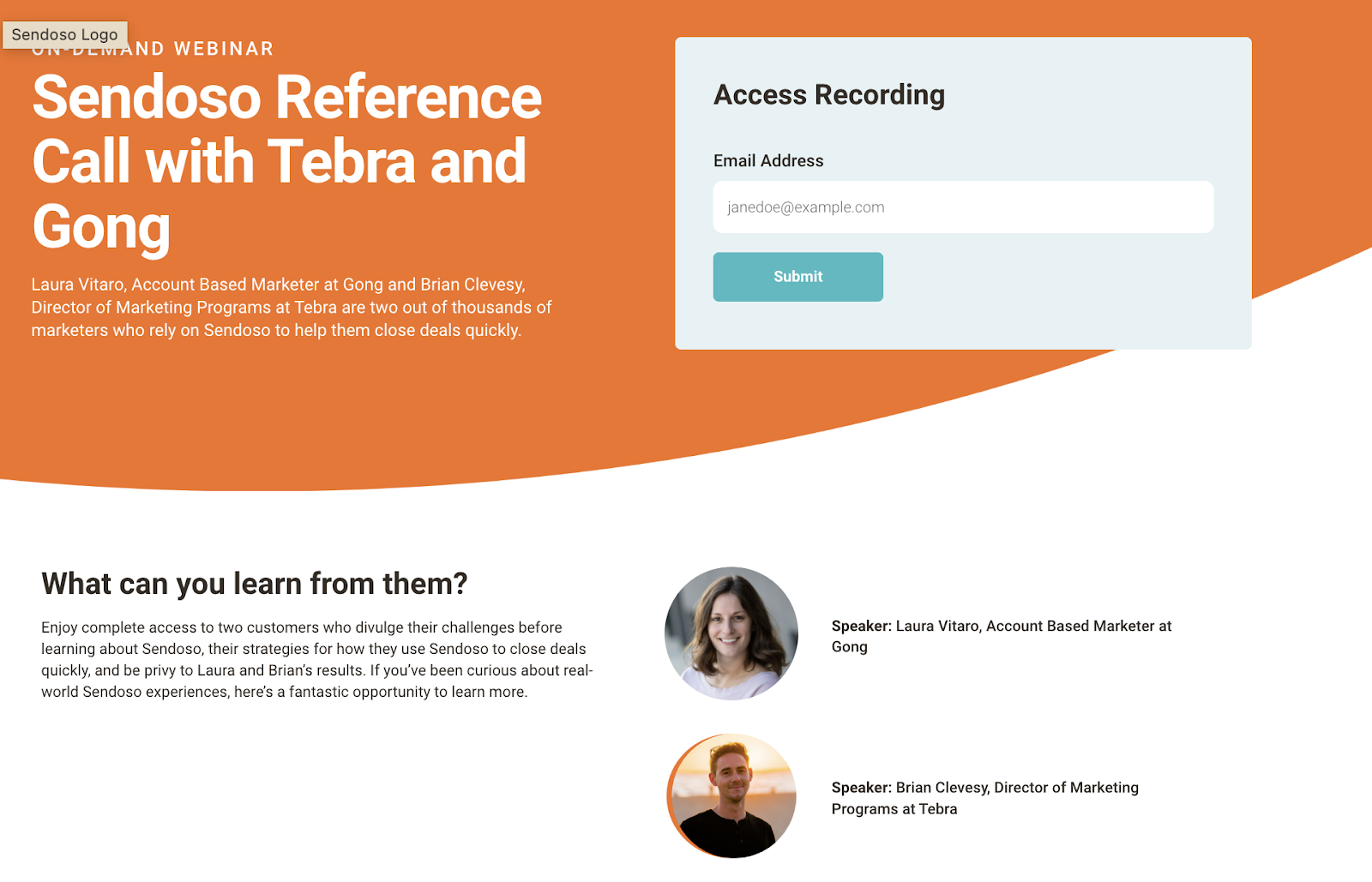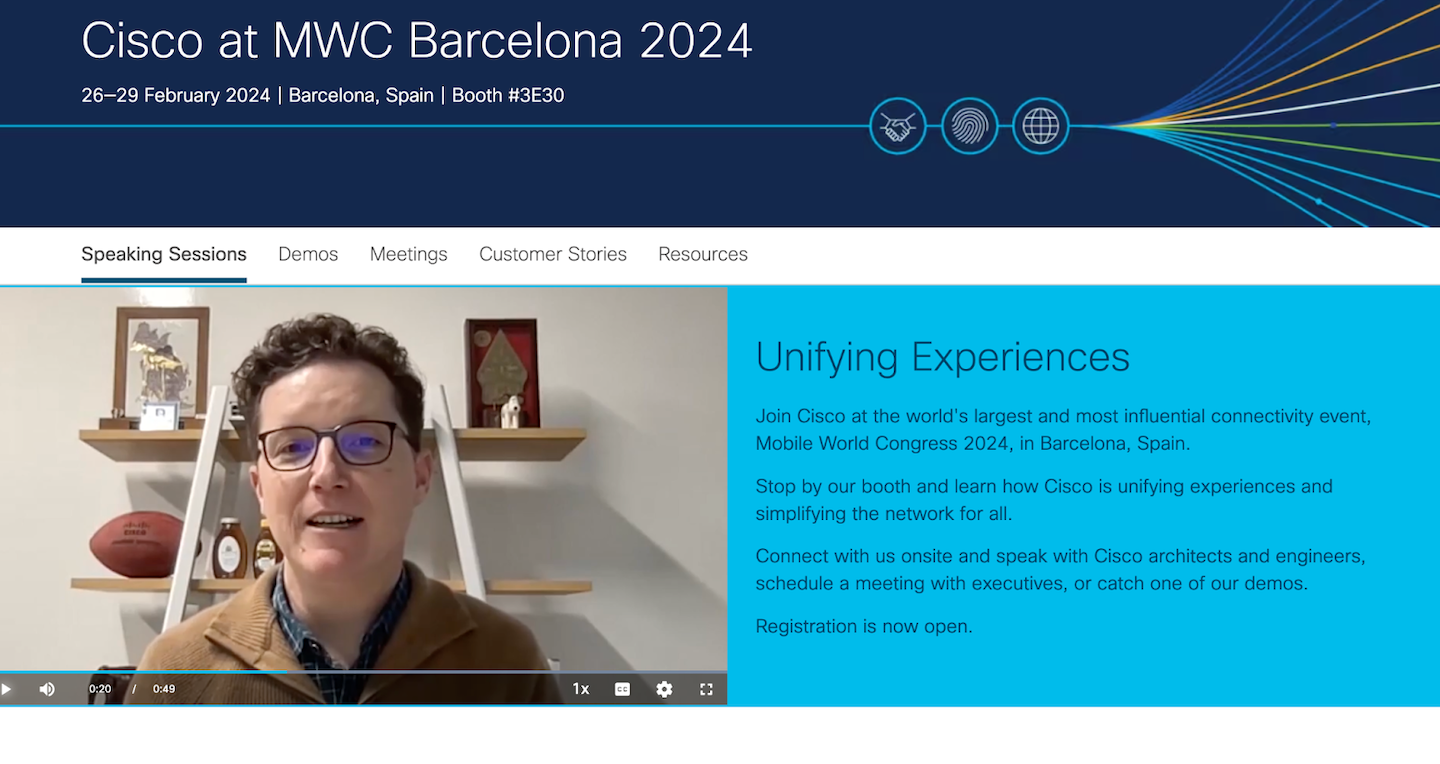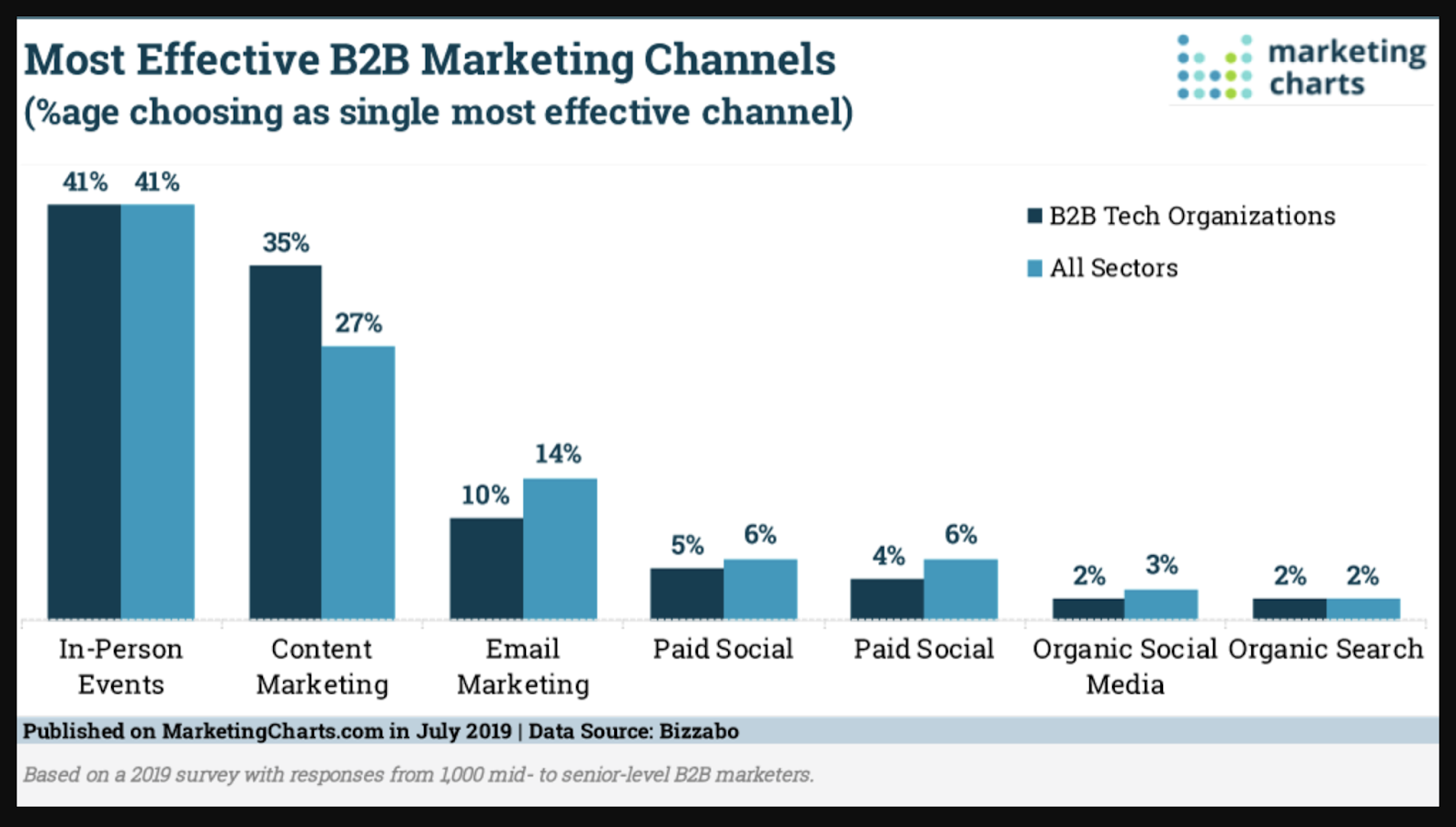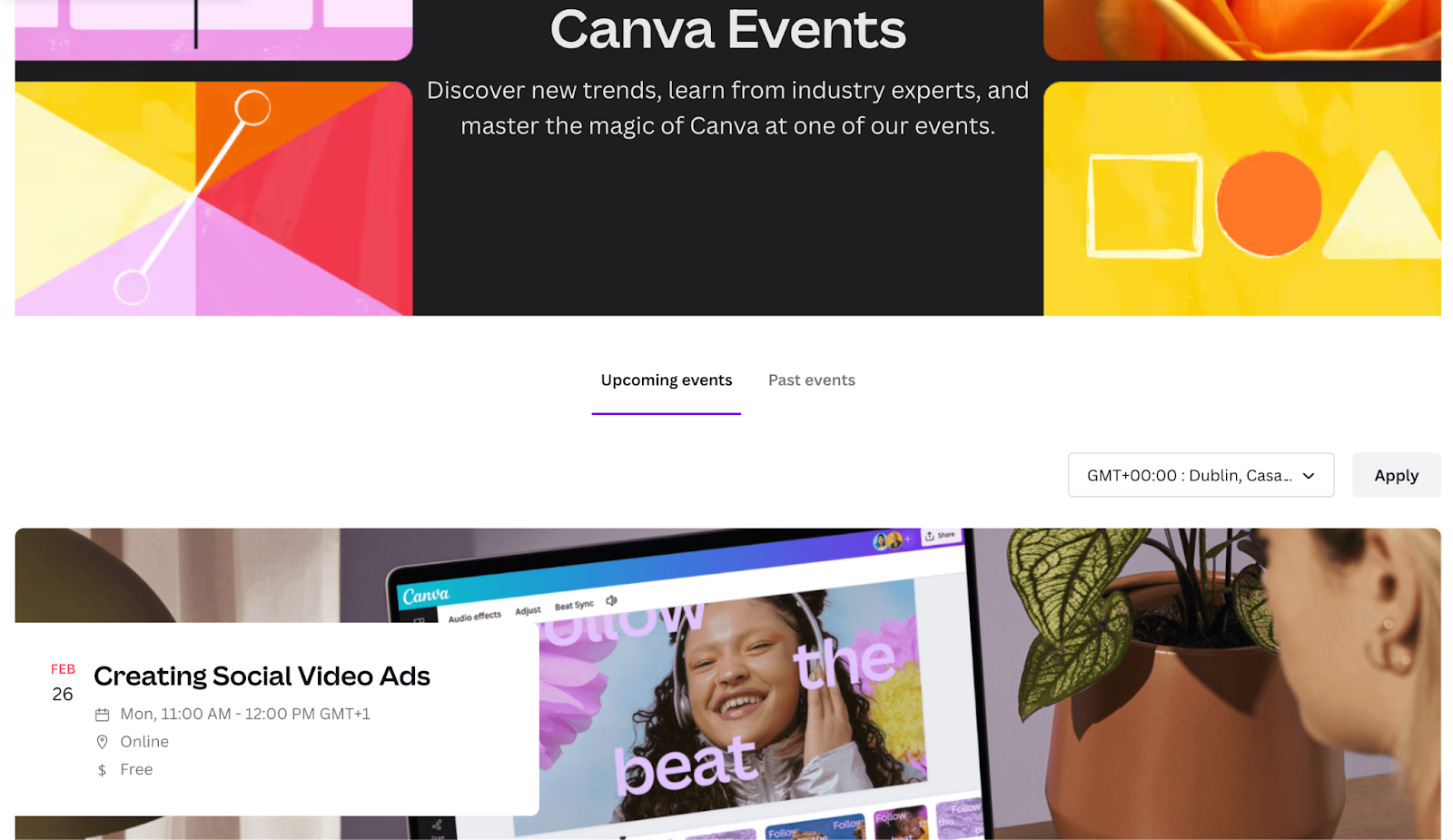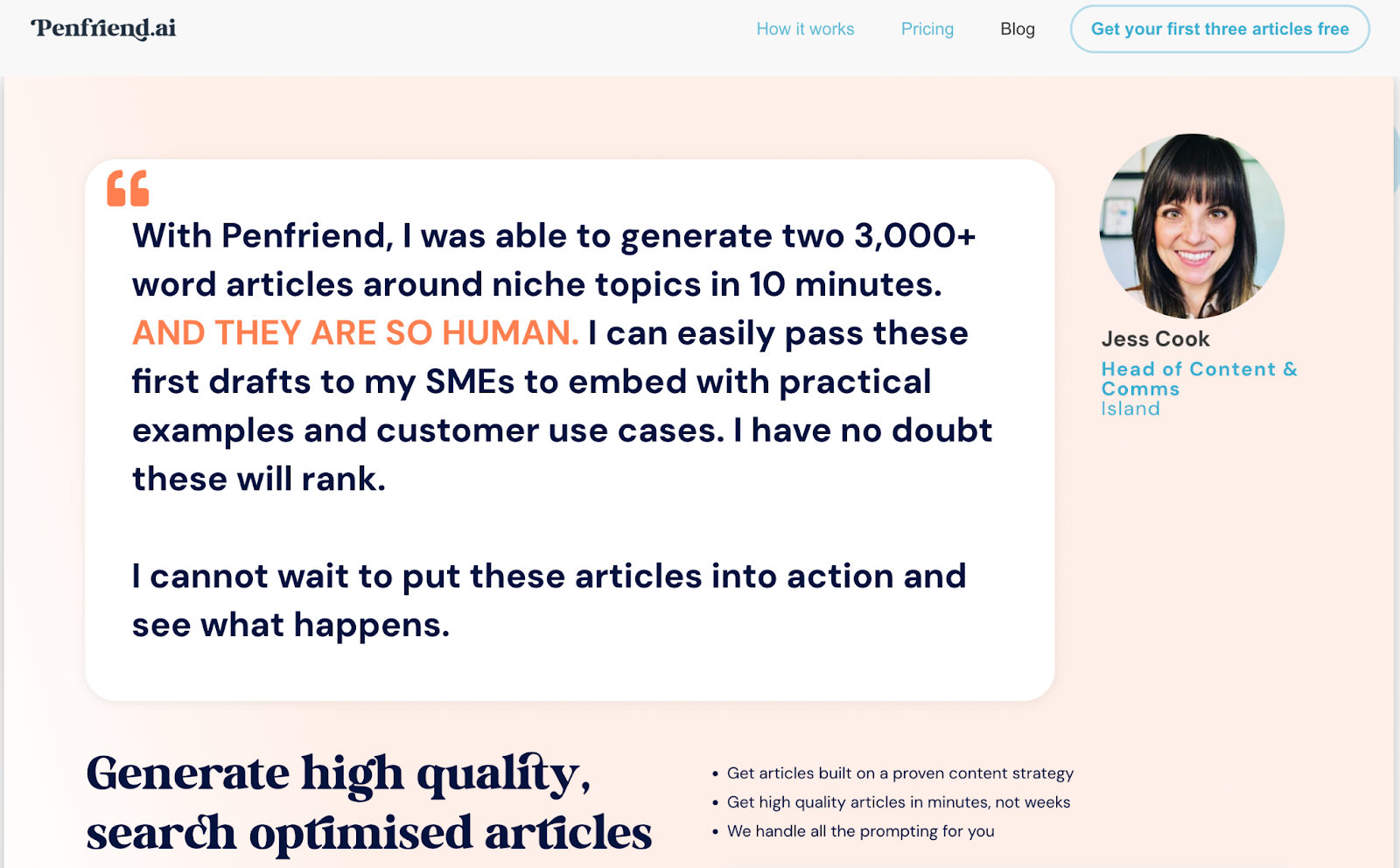6 Real-Life Customer Advocacy Examples (B2B)
As a marketer two things keep you up at night. How to turn your leads into paying customers and how to make sure your paying ones stay.
If you want to take care of both, turn up the dial on customer advocacy.
The idea is simple: you put your efforts into keeping your customers super happy so they become active promoters of your brand.
Customers are more likely to stay when you meet their needs. Potential customers are more likely to try your product when they have social proof from current users. A customer advocacy program helps this process.
There are eight types of customer advocacy: customer quotes, social likes, social sharing, product reviews, case studies or customer references, speaking engagement, referrals, and customer advisory boards.
Source: Gartner
This post will showcase six real-life examples of customer advocacy in B2B marketing.
Not sure how to get started?
#1 Pindrop: Customer Advisory Board
Pindrop, an information security company, created a CAB to improve the quality of customer delivery and satisfaction. The CAB does this by identifying the priorities, needs, and industry trends while building and maintaining relationships with its key customers.
Its CAB included six high-level executives, including John Chambers, Cisco’s executive chairman. The CAB provided a unique experience for its members by inviting them to Pindrop’s board meeting, a networking event at Four Seasons Hotel, and an exclusive Porche experience. Pindrop also asked the members to their offices, giving them full access to employees for an all-out Q&A session.
The results? Members rated Pindrop’s CAB ‘above or higher than similar forums,’ with most ratings coming back as ‘9’ or above (on a scale of 1-10).
Source: Customer Advisory Board Org
Setting up a Customer Advisory Board for B2B customer advocacy
The purpose of a CAB is to partner with your key customers to steer the strategic focus of your business and its future. In doing so, you make sure your business offerings remain relevant and meet key industry challenges.
You can create a platform of strategic partners, such as VIP customers. They can share insights and experiences with your products. Then, you can make changes to fit their exact needs. And that’s how your VIP customers become your best advocates—you give them a seat (and say) at your boardroom table.
Adding on exclusive and unique networking events (with other VIP members from the industry) and experiences is a bonus benefit. If you want to lead the market in your service offerings and customer experience, then a CAB is the way to go.
Things to consider when setting up a CAB
If you are a B2B thinking of creating a CAB, consider some of the following:
- What is the goal of your CAB? What do you want to achieve as a result?
- In accordance with your goal, invite the right type of customers. Are they C-level or other?
- How will you recruit these customers? Will you leverage Sales or Executives at your company?
- What are the benefits of your CAB that will drive customer/member sign-up? Is there an incentive?
dbt: Online Customer Community
dbt Labs is a B2B software development company. They specialize in analytics, data engineering, and data science. The company is a stellar example of how an online community can drive revenue growth through customer advocacy.
With 25,000 members, 80% of dbt Lab’s revenue comes from its community alone. Launched in 2018, it’s a community that keeps growing 10% each month (without fail).
The members are data professionals who all use dbt. The community lets them ask questions, get answers, share stories, support each other, and connect. For dbt Labs, it’s a goldmine of priceless insights on their products and customer experiences. One that helps steer them in the right direction with product development and relationship management.
Source: X
Online community: Your go-to B2B customer advocacy marketing strategy
If you want to develop products that evolve with the needs of your users, consider creating an online community. It’s a way to engage with your customers one by one. It builds true brand ambassadors for your business. You do this by hearing and addressing their concerns.
It’s also a continuously updated resource hub for your customers. When done right, it can be a key revenue generator. This is the case with dbt Labs. It can also be the top source of insights on product development.
Things to consider before launching your B2B online community
- Stand out from your competition – Keep in touch with your customers and engage with them one-on-one to boost brand loyalty.
- Make your customers the focus of the community – The purpose is to meet their needs and answer concerns. If you do this part right, the leads will take care of themselves.
- Use the community to test ideas – See what your current and potential customers think before adding features to your product.
- Act on the feedback – Every complaint is a chance to improve a customer experience.
- Showcase and support your community’s biggest fans – They are your top brand advocates.
#3 Sendoso: Group Reference Events
Sendoso is the top gifting automation platform. It has developed a golden customer advocacy strategy to boost sales.
Each quarter, they take two of their most satisfied customers and present them to 25 prospects via a group reference event (webinar).
The happy customers share their experiences with Sendoso and talk about key challenges they faced with other providers. While a part of the event showcases Sendoso and its benefits through infographics and visual presentations, the focus of these events is customer advocacy.
Prospects get to see and hear why these customers are loyal, and if they agree to attend such an event, they must be happy with the service they are getting. Eventually, the event becomes a Q&A where attendees can raise concerns, doubts, and questions.
Once the online event ends, Sendoso posts the webinar as a lead magnet on its website.
A B2B customer advocacy reference event
Customer reference events are a type of webinar. You use them to promote your business products or services by showcasing your happy customers. This customer advocacy initiative aims to generate leads. It will do this by building trust on the social proof from your brand ambassadors.
Webinars featuring peer references (like the one used by Sendoso above) are among the most potent drivers of B2B buying decisions. According to SiriusDecisions’s survey of 600 B2B marketers:
- 51% say peer referrals are their most favored content (in the early buying stage)
- For 29%, peers are their most trusted information sources (late buying stage)
Things to consider when hosting a group reference event
Before you go ahead and launch your webinar, there are a few things to consider:
- Find your customer advocates – Who will you invite to speak and share their experience with your product or service?
- How will you choose your attendees – Will it be an open or closed event to a select number of potential prospects?
- Your topic – Choose something your customer advocates are familiar with and confident talking about. Customer pain points, challenges, and solutions are always good topics to discuss.
- Choose the format – Do you have an expert sharing advice or a customer case study like Sendoso? Work out which format will best convey your message.
- Presentation matters – All text won’t do. The presentation and content need to be engaging, entertaining, and attention-grabbing. Think about visual marketing materials and demos to support your message. They should paint a picture for the potential customer.
- Time is precious – Aim for 45 minutes maximum run time.
- Offers & incentives – Consider giving a discount or special offer to participants. Include a limited-time offer incentive.
#4 Cisco: In-Person Event, Trade Show
To support its customer advocacy strategy, Cisco partners with Mobile World Connectivity (MWC), the world’s largest and most influential connectivity event series.
Being a heavyweight player, companies like Cisco have access to exclusive trade shows like this one. They set up booths to show the tech giant’s latest innovations through demos.
The 2024 event includes speaking engagements and panel discussions with Cisco’s leading experts. Attendees also have the opportunity to schedule meetings with company executives and meet and talk to Cisco’s architects and engineers.
Events like this offer exclusive access to experiences, industry leaders, and executives. They are expensive to run and participate in. However, they provide opportunities for notable brand clients to network, share ideas, and learn. This type of customer advocacy can boost your enterprise customers to become serious advocates.
In-person marketing events for B2B customer advocacy
Customer advocacy events and trade shows are a dynamic platform. They allow B2B professionals to connect, collaborate, and build beneficial relationships. In-person events like trade shows are designed to be your customer acquisition channel for generating high-quality leads.
According to Bizzabo, the #1 event management software provider for B2B conferences, 41% of B2B tech organizations find in-person events the most effective marketing channel. That is all the more reason for you to consider holding an in-person field event or conference. It’s the perfect channel to get your customers’ attention. It enhances brand visibility and builds deeper relationships with advocates.
Source: Marketing Charts
Things to consider when planning a B2B marketing customer advocacy event
- Content = Customer: Match your event content to the interests of your customers(invitees). This will ensure they remain engaged before, during, and after the event.
- Interaction-Driven Environment: Event formats that encourage attendees to participate in discussions and activities of the day tend to deliver more meaningful connections. This has a lead-on effect on achieving strategic event goals such as lead generation.
- Identify prospects and follow up: A quality event attracts your customers, partners, investors, and prospects. Make sure you identify them and follow up post-event, scoping out new business opportunities and partnerships.
- Thought leadership: Showcase your company’s experts, innovators, and thought leaders. Whether in the form of a product demo or a speaking engagement, don’t miss the opportunity to boost your brand’s visibility and reputation amongst key industry players.
#5 Canva: Live Virtual Events, Webinars
Canva, a design software company, promotes customer advocacy through live webinars. It hosts many webinars to support its large customer base. The webinars create brand advocates. They do this by engaging, teaching, and providing thought leadership. They reach 130m active monthly users across 190 countries. And it’s all for free.
Their webinars have a set structure. The landing page CTA is ‘Register Now,’ which lets customers register for one of a dozen dates/time slots (see below), giving the customer flexibility.
One or two Canva pros run each webinar, and customers also get the opportunity to participate via chat. Essentially, these free webinars are lead magnets for driving more business.
Virtual Events, Live Webinars for B2B Customer Advocacy
Virtual events like live webinars have increased since 2020. LinkedIn reported that 67% of marketers increased their investment in webinars. Several sources suggest this customer advocacy marketing tool will continue to rise.
According to various marketing data, live webinars are popular because they offer customer education while generating leads.
- 80% of people attend virtual events for educational reasons, followed by networking purposes (Markletic)
- 45.7% of marketers say that the primary goal of virtual events is to generate a pipeline (Markletic)
- 68% of B2B marketers say live events help with generating the most leads (Marketing Charts)
- 55% of marketers share that the top three goals for their online events include customer relations, education, and retention (Bizabbo)
Things to consider when planning a virtual marketing event or webinar
- Content – The easiest way to increase registrations to webinars is to make them educational, with learning pieces focused on teaching customers.
- Time – Keep events under an hour for the best customer experience, as 66% of respondents of a Vimeo survey say they are discouraged from registering if the event is longer.
- Q&A – Having some form of Q&A session makes the webinar more engaging, so it’s worth adding to the content mix.
- Registrations – Create a landing page for registrations (80% of B2B marketers say their website is the most widely used channel).
#6 Penfriend Reviews & Testimonials
Founded in 2023, Penfriend is an AI article-writing tool. The Canada-based tech company’s tool aims to solve every content marketer’s biggest challenge: writing SEO-optimised content at scale without the expert writer price tag.
Used by companies like Maven, eWebinar, Contrast, Island, and TopApps, Penfriend’s primary drivers of lead generation are reviews and testimonials from their customer advocates.
Penfriend has a 77% conversion rate from website visitors to free account sign-ups. John Harrison, Co-Founder, credits that high figure to the dozen testimonials on the website’s home page. They come from leading content marketing professionals.
“Whether we like it or not, most people are risk-averse — any hint of risk or friction and we’ll do a runner. Sadly, we’re more like sheep than guinea pigs.
“And so we all look for signals that we’re not the first, the bold claims are believable, and the risk we’re about to take is reduced.
“Testimonials are an easy way to show all those things,” says John
Using Reviews and Testimonials as a Form of Customer Advocacy in B2B
Using product reviews and customer advocate testimonials is one of the best ways to gain market trust—especially if you are a new business.
A crucial part of Penfriend’s launch success, John says, came from the momentum the team had built with their beta testers and the social proof of their testimonials:
“Without them, we’d be launching a product with zero track record and no third-party proof that Penfriend does what we claim.”
Things to consider if you want reviews and testimonials to drive B2B lead generation
John shares some top tips on how to build a customer advocacy strategy around customer reviews and testimonials:
- Harness the momentum. The key is to ask for a testimonial while they are excited about your product or service.
- Make it easy. Direct links and simple forms for reviews and testimonials increase customers’ likelihood of filling them out.
- Be specific. Help your customers come up with the words. Guide their thought process with questions like, ‘What challenge did the tool solve for you?’ or ‘How did the product exceed your expectations?’
- Incentivize. Offer small discounts or entries into prize pools as incentives for customers to complete a testimonial.
- Authority carries more weight. If the testimonial is from an expert in the field, it will have more weight with your prospects.

